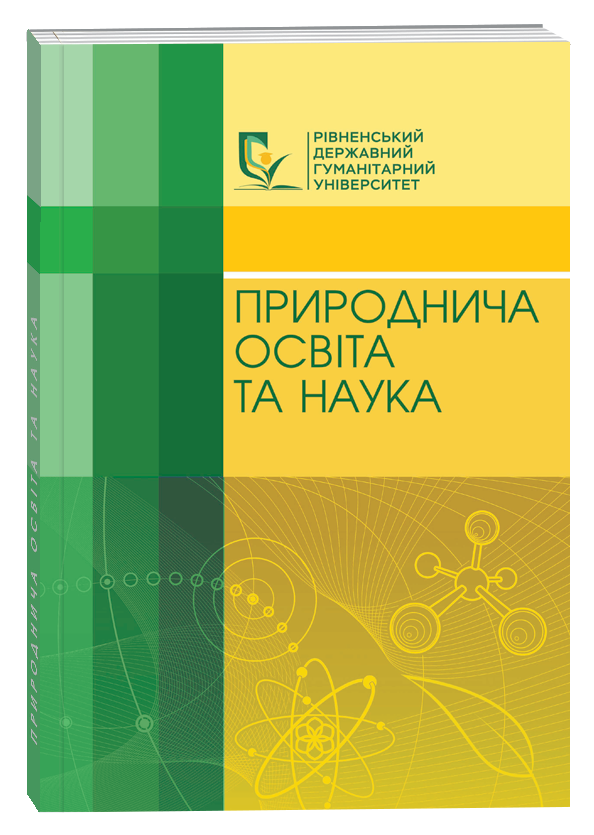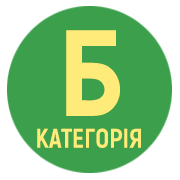USING DIGITAL ONLINE MUSHROOM IDENTIFIERS IN THE PROCESS OF TEACHING BIOLOGY
Abstract
Today, mobile learning and the use of digital technologies in the educational process are developing rapidly. The article reveals the methodological principles of using online identifiers in the educational process in higher education institutions in the training of future biologists and biology teachers, their readiness to conduct lessons and electives, conduct out-of-class and out-of-school work in biology, and prepare students to write research projects. The most popular online mushroom identifiers were studied: Picture Mushroom, ShroomID, and Mushroom Identifier. Step-by-step instructions for using these apps are provided. All of them are available for download and work in two modes: in real time, if you have access to a camera and the Internet; when you save photos to the mobile device gallery and identify the species after a certain time. According to the study results, all of the online mushroom identifiers considered showed fairly high rates of correct identification (55–85%). However, but we found Picture Mushrooms to be the most effective and promising. One advantage of using this application is the fast and accurate identification of over 14,000 mushroom species. Additionally, the application offers an expanded database, a user-friendly interface, and the ability to communicate with community members. The use of online mushroom identifiers has been successfully tested during the educational process at the Zhytomyr Ivan Franko State University among students of the Biology program at the bachelor's level of higher education. Based on the results of the student survey, the use of mobile online identifiers was found to enhance understanding of the systematics and biodiversity of fungi, increase interest in mycology, and improve recognition of poisonous and edible fungi in the area. We consider it promising to use mobile online mushroom identifiers when organizing and conducting botanical practices, field trips, studying mycology, writing term papers and qualification papers by students, as well as monitoring the state of mushroom populations, etc.
References
2. Зерова М., Морочковський С., Радзієвський Г., Сміцька М. Визначник грибів України. Т. 4. Базидіоміцети: Дакриміцетальні, Тремелальні, Аурикуляріальні, Сажкові. Київ : Наукова думка, 1971. 314 с.
3. Зерова М., Роженко Г. Визначник грибів України. Т. 5. Базидіоміцети. Кн. 1. Екзобазидіальні, афілофоральні, кантарелальні. Київ : Наукова думка, 1972. 314 с.
4. Зерова М., Роженко Г. Визначник грибів України. Т. 5. Кн. 2. Болетальні, стробіломіцетальні, трихоломатальні, ентоломатальні, русулальні, агарикальні, гастероміцети. Київ : Наукова думка, 1979. 511 с.
5. Освітні програми для закладів загальної середньої освіти. URL : https://mon.gov.ua/ua/osvita/zagalna-serednyaosvita/navchalni-programi (дата звернення 03.04.2024).
6. Плужник А. В., Романюк Р. К. Використання онлайн-визначників під час проведення факультативних занять з біології грибів. Біологічні дослідження – 2022: зб. наук. праць. Житомир : ПП «Євро-Волинь», 2022. С. 292–294.
7. Список кращих безкоштовних програм для визначення рослин по фото. URL : https://sukkulenty.com/uk/statti/bezkoshtovni-programy-dlya-vyznachennya-roslyn-po-foto/ (дата звернення 10.05.2024).
8. A l-Rahmi A. M., Al-Rahmi W. M., Alturki U., Aldraiweesh A., Almutairy S., Al-Adwan A. S. Acceptance of mobile technologies and M-learning by university students: An empirical investigation in higher education. Education and Information Technologies, 2022. 27 (6). Р. 7805–7826. DO I:10.1007/s10639-022-10934-8.
9. B ernicchia A. Fungi Europaei 10 Polyporaceae s.l. Edizioni Candusso, 2005. 808 p.
10. C rompton H., Burke D. The use of mobile learning in higher education: A systematic review. Computers & Education, 2018. 123. Р. 53–64. https://doi.org/10.1016/j.compedu.2018.04.007.
11. D igital Education Action Plan 2021-2027. Resetting education and training for the digital age. (2020, Sept.30) [Online]. URL : https://education.ec.europa.eu/focus-topics/digital-education/action-plan.
12. Ellis M. B., Ellis J. P. Microfungi on land plants. An identification handbook, 1985. 868 p.
13. Ellis M. B., Ellis J. P. Microfungi on miscellaneous substrates: an identification handbook. Croom Helm, 1988. 400 p.
14. H awksworth D. L., Lücking R. Fungal diversity revisited: 2.2 to 3.8 million species. In: The fungal kingdom. ASM Journals. Microbiology Spectrum, 2017. 5 (4). Р. 79–95.
15. K alamees K. A. Main problems and methods of mycological research. Problems of studying fungi and lichens. Tartu, 1965. Р. 14–21.
16. N aveen Neelakandan. Benefits and Challenges of Mobile Learning. January 9, 2021. URL : https://elearningindustry.com/benefits-and-challenges-of-mobile-learning (accessed on 27.04.2024).
17. Picek L., Šulc M., Matas J., Heilmann-Clausen J., Jeppesen T. S., Lind E. Automatic Fungi Recognition: Deep Learning Meets Mycology. Sensors, 2022. 22. 633. URL : https://doi.org/10.3390/s22020633.
18. R omaniuk R., Fonariuk O., Pavliuchenko O., Shevchuk S., Yermoshyna T., Povidaichyk M. Application of Information and Communication Technologies in the Study of Natural Disciplines. Postmodern Openings, 2022. Vol. 13(1). P. 313–329. https://doi.org/10.18662/po/13.1/398.
19. R yvarden L. Melo I. Poroid fungi of Europe. Fungiflora, 2014. 431 p.
20. Samsiah Bidin, Azidah AbuZiden. Adoption and Application of Mobile Learning in the Education Industry. Procedia – Social and Behavioral Sciences, 2013. Vol. 90. P. 720–729. https://doi.org/10.1016/j.sbspro.2013.07.145.
21. Tong D. H ., Nguyen T.-T., Uyen B. P., Ngan L. K . Using m-learning in teacher education: A systematic review of demographic details, research methodologies, pre-service teacher outcomes, and advantages and challenges. Contemporary Educational Technology, 2023. 15 (4), ep 482 https://doi.org/10.30935/cedtech/13818.






